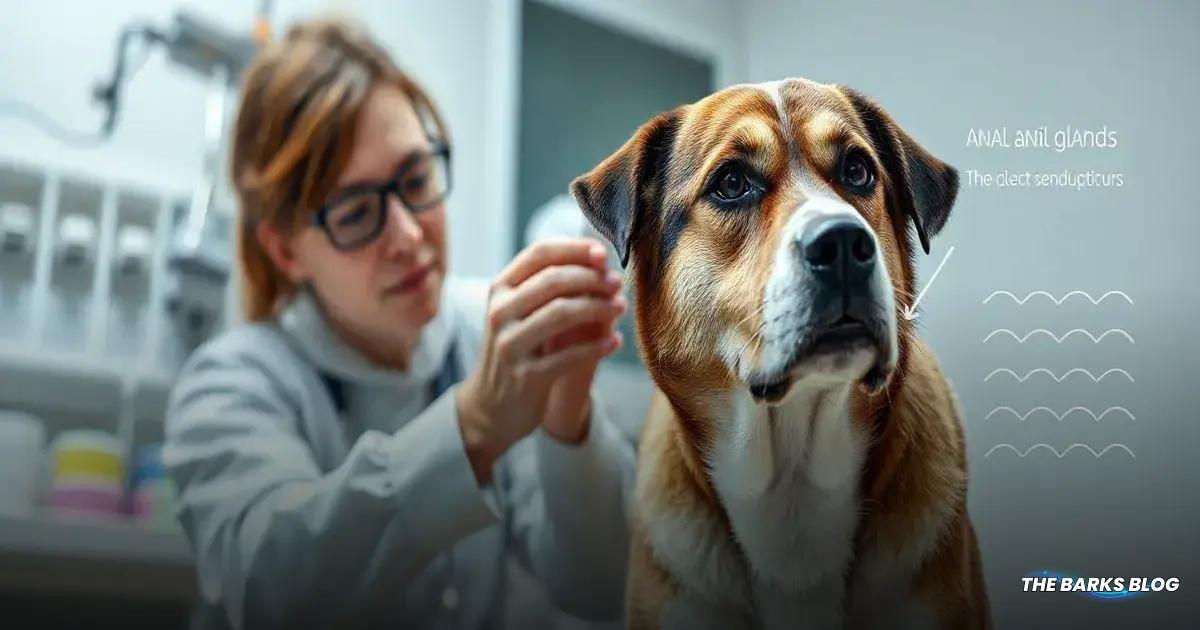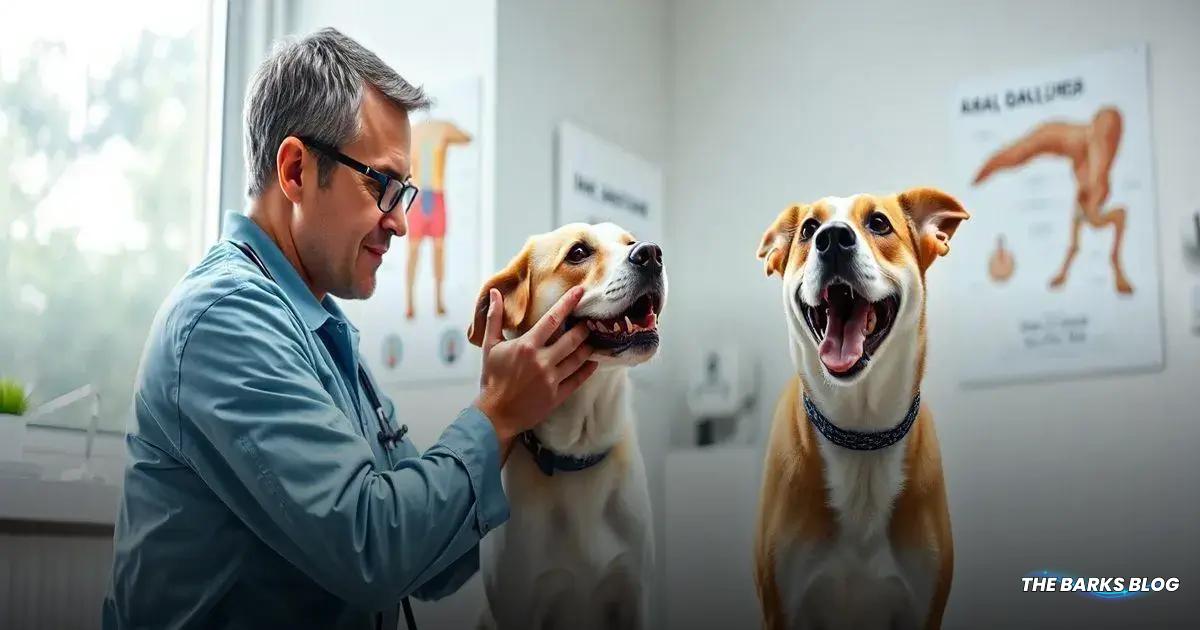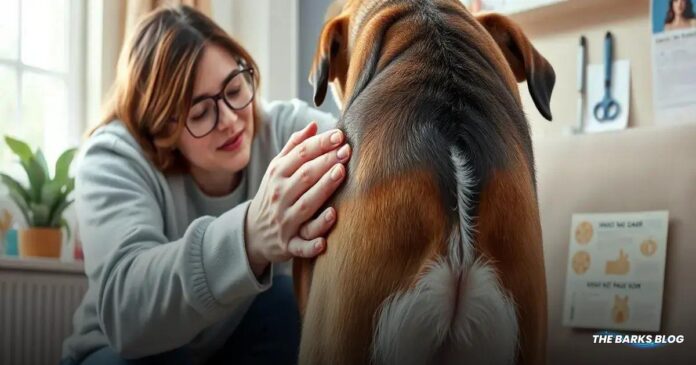Understanding dog anal glands is essential for pet owners, as issues like foul odors and discomfort can arise from insufficient dietary fiber, diarrhea, or infections. Signs such as scooting, licking, or reluctance to poop indicate potential problems. Treatment may involve anal gland expression, dietary changes, hygiene practices, and antibiotics if necessary. Regular veterinary check-ups are crucial for preventing complications and ensuring your dog’s health.
Dog anal glands can produce unpleasant odors, indicating potential health issues. Understanding their function and maintenance is crucial for every dog parent.

Overview of Dog Anal Glands
The overview of dog anal glands is essential for understanding their role in your dog’s health. Also known as anal sacs, these small, oval-shaped glands are located on either side of your dog’s anus, just beneath the skin. They play a significant role in your dog’s communication and digestion.
Dog anal glands produce a greasy, foul-smelling fluid that serves several purposes. One of the primary functions is identification; when dogs greet each other, they often sniff each other’s butts to gather information about the other dog. Each dog’s unique scent from their anal glands helps them recognize one another.
Additionally, anal glands assist in making pooping easier. When your dog squats to defecate, the muscular contractions around the anus help empty the glands, releasing the fluid and aiding in the elimination process.
Moreover, the scent from a dog’s poop, influenced by the anal glands, acts as a territorial marker. This olfactory signal informs other dogs about their presence in the area.
Interestingly, dogs may also secrete anal gland fluid involuntarily when they experience strong emotions like excitement or fear. This response can sometimes lead to unexpected odors, which can be concerning for dog owners.
Overall, while anal glands serve important functions, issues can arise when they become impacted or infected, leading to unpleasant smells and discomfort for your dog. Regular monitoring and proper care can help maintain your dog’s anal gland health.

Common Causes of Smelly Anal Glands
Understanding the common causes of smelly anal glands is crucial for dog owners to maintain their pet’s health and comfort. Anal glands can become impacted for various reasons, leading to discomfort and foul odors. Here are some of the most frequent causes:
1. Too Little Dietary Fiber: A diet lacking in fiber can result in soft feces, which do not provide enough pressure to stimulate the anal glands during defecation. This can prevent the glands from emptying properly.
2. Diarrhea: When a dog experiences diarrhea, the feces are too watery and move through the digestive tract too quickly. This rapid transit means that the anal glands do not get the necessary stimulation to empty.
3. Constipation: Conversely, if a dog is constipated, stool may not be produced at all, leaving the anal glands with no reason to empty their contents. This can lead to swelling and discomfort.
4. Abnormal Anal Tone: Sometimes, the muscles around the anus may be too weak to facilitate the contractions needed to empty the anal glands. This can be a result of various health issues or physical conditions.
5. Anal Gland Tumors: Tumors in or around the anal glands can create a physical blockage, preventing the glands from emptying when a dog defecates. This can lead to significant issues and requires veterinary attention.
Other factors contributing to smelly anal glands include chronic dermatitis, obesity, and allergies. Each of these conditions can affect the normal functioning of the anal glands, leading to increased odor and potential health complications.
Being aware of these common causes can help you identify issues early and seek appropriate veterinary care, ensuring your dog remains healthy and comfortable.

Signs of Anal Gland Issues
Recognizing the signs of anal gland issues in your dog is essential for timely intervention and treatment. While a foul odor is a primary indicator, there are several other symptoms that may suggest your dog’s anal glands are not functioning properly. Here are some key signs to watch for:
Scooting: If your dog is dragging their rear end across the ground, it could indicate discomfort or irritation in the anal area, often caused by impacted anal glands.
Licking or Biting: Excessive licking or biting at the rear end can signal that your dog is trying to relieve discomfort or itching associated with anal gland issues.
Discomfort When Pooping: If your dog seems to struggle or show signs of pain while trying to defecate, it may be due to swollen anal glands.
Reluctance to Poop: A dog that avoids defecating or appears hesitant to go outside may be experiencing discomfort from their anal glands.
Redness and Swelling: Inspecting the area around the anal sphincter for signs of redness or swelling can help identify irritation or infection.
Blood or Pus: Noticing blood or pus in your dog’s poop or on the ground after scooting is a serious sign that warrants immediate veterinary attention.
Tail Held Down: A dog that keeps their tail down or tucked between their legs may be feeling discomfort or pain in the anal region.
Sensitivity to Touch: If your dog flinches or shows signs of discomfort when their hind end is touched, it may indicate anal gland issues.
If you observe any of these signs in your dog, it is essential to consult with your veterinarian. Early detection and treatment can help alleviate discomfort and prevent more serious complications related to anal gland health.

Treatment Options for Anal Gland Smell
When dealing with treatment options for anal gland smell, it’s important to work closely with your veterinarian to identify the underlying cause of the odor and implement appropriate interventions. Here are some common treatment methods:
1. Anal Gland Expression: One of the first steps in addressing anal gland odor is to perform an anal gland expression. This process involves manually emptying the glands to relieve impaction. While it can be messy, veterinarians are trained to do this safely and effectively. Regular expressions may be necessary for dogs prone to anal gland issues.
2. Dietary Adjustments: Increasing your dog’s dietary fiber can help firm up their stool, promoting natural anal gland emptying during defecation. Adding canned pumpkin or switching to a high-fiber dog food can be beneficial. Always consult your vet before making significant changes to your dog’s diet.
3. Proper Cleaning and Hygiene: Keeping your dog’s anal area clean can help reduce odor. Regular grooming and bathing can assist in maintaining hygiene, especially for breeds with long fur around the rear end.
4. Antibiotics: If an infection is present due to anal gland impaction, your veterinarian may prescribe antibiotics to clear the infection. It’s essential to complete the full course of medication and follow up with your vet to ensure the infection has resolved.
5. Sedation for Severe Cases: In some instances, if your dog is particularly uncomfortable, your vet may recommend sedation for a thorough examination and expression of the anal glands. This allows for a more comprehensive assessment and treatment without causing additional stress to your pet.
6. Monitoring and Follow-Up: After treatment, it’s crucial to monitor your dog’s condition. Regular veterinary check-ups can help catch any recurring issues early. Keeping an eye on your dog’s stool consistency and overall health can also provide valuable insights into their anal gland function.
By addressing the underlying causes and implementing these treatment options, you can help alleviate anal gland odor and ensure your dog remains comfortable and healthy.
Conclusion
In conclusion, understanding your dog’s anal glands is vital for maintaining their overall health and comfort. Regular monitoring of signs and symptoms can help you identify potential issues early, allowing for timely intervention.
Whether it’s managing diet, performing anal gland expressions, or seeking veterinary care, addressing anal gland health is crucial for your furry friend’s well-being.
By taking proactive steps, you can help prevent discomfort and ensure your dog leads a happy, healthy life.
FAQ – Frequently Asked Questions about Dog Anal Gland Health
What are the signs that my dog’s anal glands need attention?
Signs include foul odor, scooting, licking or biting at the rear end, discomfort when pooping, and redness or swelling around the anal area.
How can I prevent anal gland issues in my dog?
Preventive measures include ensuring a high-fiber diet, maintaining a healthy weight, keeping your dog well-hydrated, and monitoring their poop consistency.
Is it safe to express my dog’s anal glands at home?
While some owners may choose to express anal glands at home, it’s best to consult with your veterinarian for guidance to prevent injury or infection.
What should I do if I notice blood or pus in my dog’s poop?
If you see blood or pus, contact your veterinarian immediately, as this can indicate a serious issue that requires prompt medical attention.
Can anal gland problems lead to more serious health issues?
Yes, if left untreated, anal gland issues can lead to infections, abscesses, and other complications that may require surgical intervention.
How often should I take my dog to the vet for anal gland check-ups?
Regular veterinary check-ups are recommended, especially for dogs prone to anal gland issues. Your vet can advise you on the appropriate frequency based on your dog’s specific needs.




